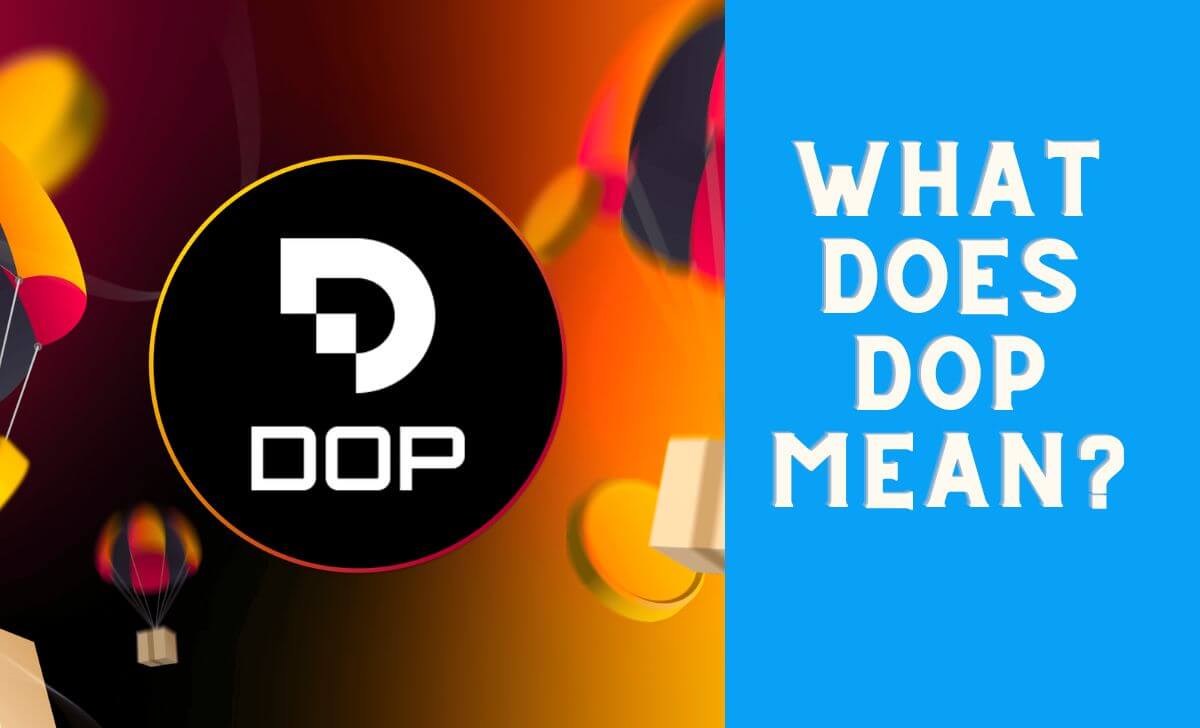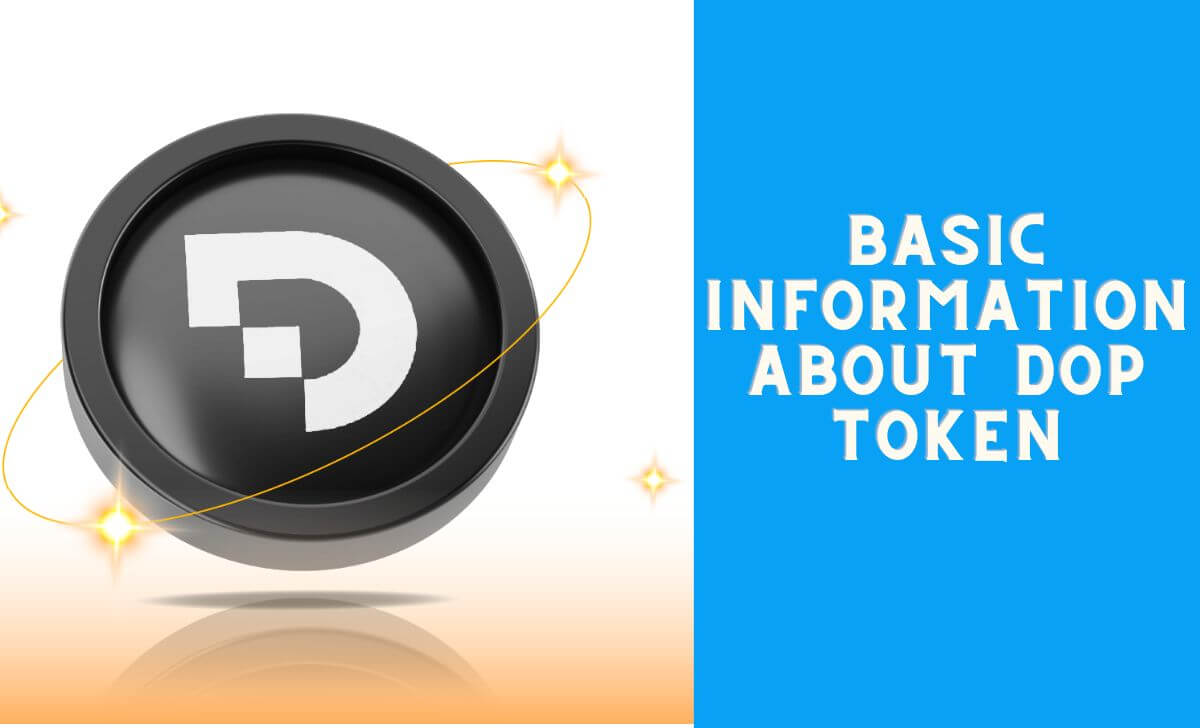Data Ownership Protocol (DOP) is a privacy-enhancing protocol on Ethereum that gives users full control over whether their on-chain data is visible or hidden. In addition, DOP maintains secure interoperability with DApps on Ethereum and has strict management measures to enhance user experience.
Get ready to dive into the world of Data Ownership Protocol (DOP) with AZCoin in the article that follows!
What does DOP mean?

Data Ownership Protocol (DOP) is a privacy-enhancing protocol on Ethereum that gives users full control over what on-chain data they can display or hide. DOP uses zk-SNARKs and ECDSA to enable users to selectively reveal specific types of data such as asset holdings, account balances, etc.
In addition to empowering data management, DOP also maintains secure interoperability with DApps on Ethereum to enhance user experience. In addition, DOP will also implement strict controls to identify illegal transactions and prevent them from third-party integration tools.
The most prominent measure is Zero-knowledge KYC is used by DOP to verify user identity to facilitate selective data management while still maintaining a certain level of transparency.
How DOP works
DOP uses zk-SNARKs and ECDSA to enable users to selectively disclose their data types. First, we need to know about the concept of ECDSA (Elliptic Curve Digital Signature Algorithm), which is an algorithm used to create digital signatures to verify the authenticity and integrity of digital data.
How to use ECDSA in DOP is as follows:
- The user creates 1 internal account.
- Whenever users encrypt, transfer, decrypt their assets via DOP, they must generate signed data using the private key from the internal account.
- The data is then verified in the smart contract via the ECDSA algorithm.
- The transaction will only be executed if the signature is verified as unique from the internal account.
After validating the transaction, DOP will use zk-SNARKs to hide the data but still prove the correctness of that data. The verifier’s arguments are kept secret in the form of hashes, which is to transform them into a random string to protect the privacy of the data.
Features of DOP

Increased token utility and control
DOP provides users with powerful internal account utilities to securely manage their coin/token assets and maintain sole control over their data. The combination of off-chain transactions and Zero Knowledge Proof allows users to transfer tokens almost instantly between DOP internal accounts in a private manner.
DOP is not dependent on a specific blockchain but is designed to be compatible with many tokens from the standard ERC-20 such as: PEPE, LINK, APE, COMP, CHZ, USDT, USDC, SHIB,… Users can control which tokens they want to reveal publicly versus keep private through visibility options.
Data Ownership Protocol is an important part related to GameFi, DAO (Decentralized Autonomous Organizations) and Web3, you can refer to it for more information.
Increasing utility and control of NFTs
With DOP, users are given more granular control over their NFTs and unlock new utility and customization options. On most blockchains, NFT ownership and transaction history are completely public by default. However, some creators and collectors may want to selectively display the NFT assets they own or hide sensitive purchase details.
From here, DOP allows users to customize the visibility of their NFT portfolio as they wish. For example:
- Users can publicly display their entire NFT collection to attract fans and new buyers, while keeping their account balance private.
- Users may want to purchase valuable NFTs without revealing their purchases and transactions to the public.
The highlight of DOP is that the protocol allows individuals and organizations to flexibly control their own NFT data. The balance between visibility and privacy opens up new innovative applications and brings a lot of value to users.
Interact with DApps on Ethereum
In addition to data control, DOP allows users to interact with Ethereum DApps securely. The protocol allows users to use their cryptocurrency tokens and NFTs on popular Ethereum DeFi platforms such as DEX, lending/borrowing, and prediction markets.
Users interacting with DApps through DOP will benefit from DOP’s privacy features like selective disclosure. This interoperability from DOP gives users control over their visibility.
In addition to connecting to external ecosystems, DOP also seeks to encourage the creation of DApps within its own internal ecosystem. Developers can use DOP’s features to build DEXs, NFT Marketplaces, liquidity pools, and more, all with configurable user-controlled privacy. Every fundamental function, from token swaps to NFT auctions, can take advantage of DOP’s capabilities.
Third-party wallet integration
DOP’s main design priority is to ensure seamless integration with a wide variety of third-party blockchain wallets. Instead of limiting users to a single proprietary wallet, DOP will provide open APIs and libraries to enable compatibility with a wide variety of external wallets.
Basic information about DOP token

- Token name: DOP
- Token: DOP
- Blockchain: Ethereum
- Token standard: ERC-20
- Token usage: Utilities, Administration
DOP Token Allocation
- Private Sale: 30%
- TOMI Holders: 23%
- Core Team: 22%
- Operations & Marketing: 8%
- Launchpad & Liquidity: 6%
- DOP Reserve: 6%
- Advisors: 3%
- Testnet Rewards: 1%
DOP Token Utility
DOP is the native token of the protocol and is used in the following cases:
- DOP is used as transaction fees for users to pay for services in the protocol.
- DOP holders can vote on protocol governance proposals and can unlock several other premium features within the protocol.
DOP Wallet
DOP is a token of ERC-20 standard, so investors can store it in wallets such as MetaMask, Trust Wallet, Coin98 Wallet,… when this token is officially launched.
DOP development team

Notable members of the DOP development team include:
- Mike Coral: He is the Founder of DOP.
- Kohji Hirokado: He is the Co-Founder of DOP.
- Will Qureshi: He is the CTO of DOP.
- Daniel Tam: He is the CFO of DOP.
Additionally, if you have an interest in cryptocurrency and wish to explore further, please check out the best crypto exchanges 2024 listed page.
Partner
Currently, DOP is working with Chainalysis to ensure protections are in place and prevent malicious activity on the protocol.
Summary
Data Ownership Protocol (DOP) is a privacy-enhancing protocol on Ethereum that gives users full control over whether their on-chain data is visible or hidden. With the features DOP provides, users can have full control over data on assets such as tokens, NFTs, and transactions as privately as they want.
Through this article, you have probably grasped some basic information about the DOP project to make your own investment decisions. If you have any further inquiries, feel free to contact AZcoin.

I am Tony Vu, living in California, USA. I am currently the co-founder of AZCoin company, with many years of experience in the cryptocurrency market, I hope to bring you useful information and knowledge about virtual currency investment.
Email: [email protected]











